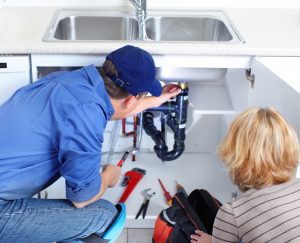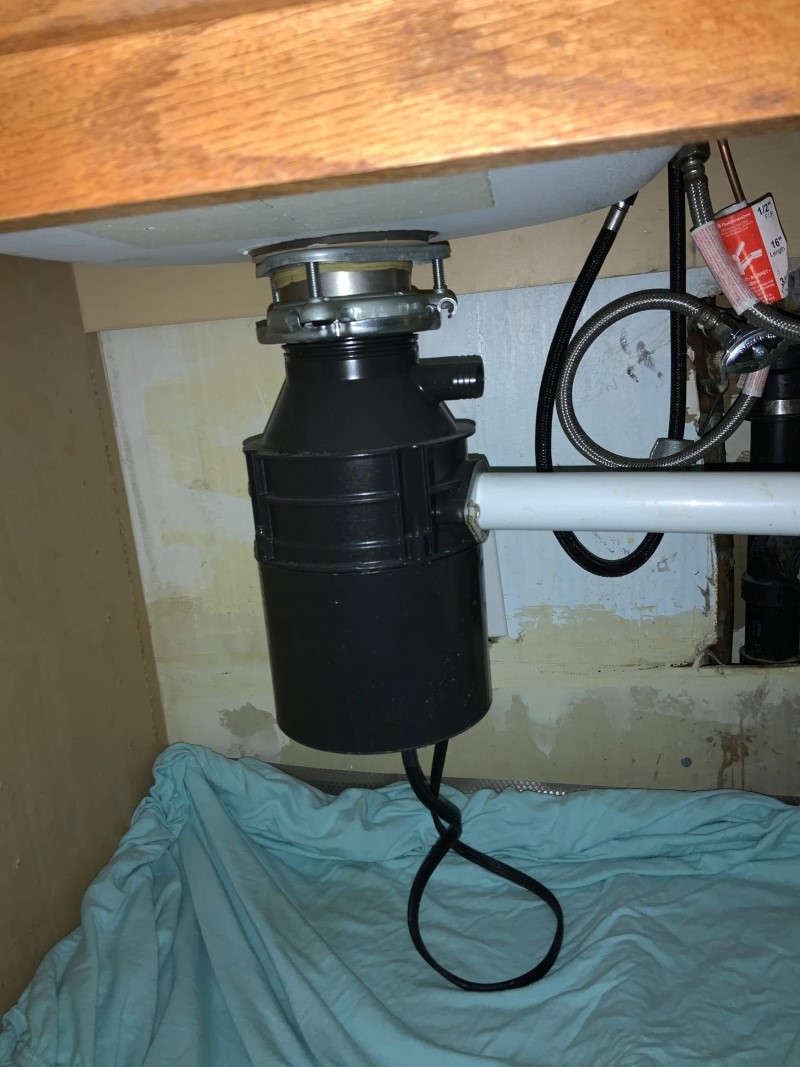Tested Solutions for Fixing a Dripping Garbage Disposal
SourceWhat're your opinions on The Handy Guide To Fixing Your Garbage Disposal Leaking?

Garbage disposals are essential kitchen area devices that help in disposing of food waste efficiently. Nevertheless, a dripping waste disposal unit can be a frustrating and unpleasant trouble to handle. Luckily, several leakages can be fixed easily with a few straightforward steps. In this short article, we will go over just how to repair a leaking waste disposal unit efficiently.
Intro
Garbage disposals are mounted under kitchen area sinks and are designed to shred food waste into smaller sized items, enabling it to travel through the pipes system easily. While these gadgets are normally trustworthy, leakages can take place over time because of deterioration, loosened connections, or damages to the device.
Step-by-Step Overview to Taking Care Of a Dripping Waste Disposal Unit
Turn Off the Power
Before trying any type of repair services, make certain that the power to the waste disposal unit system is shut off to avoid the danger of electric shock.
Situate the Leak
Identify the precise location of the leak and establish the reason
Tighten up Links
Make use of a wrench to tighten up any type of loose connections in between the disposal system and the plumbing system.
Change Seals or Gaskets
If the leak is due to used seals or gaskets, eliminate the old components and change them with new ones.
Patching Cracks or Openings
For cracks or openings in the disposal unit, usage epoxy or an appropriate patching product to seal the broken area.
Recognizing the Source of the Leak
Prior to trying to take care of a leaking waste disposal unit, it is vital to determine the source of the leak. This can usually be done with aesthetic inspection or by performing basic examinations.
Visual Inspection
Examine the garbage disposal device meticulously for any kind of signs of water leakage. Pay close attention to locations around seals, gaskets, and link points.
Checking for Leaks
One way to examine for leakages is by running water through the disposal unit and looking for any noticeable signs of leak.
Typical Reasons For Leaks in Garbage Disposals
Worn Seals and Gaskets
Seals and gaskets play a crucial function in stopping water from leaking out of the waste disposal unit. Over time, these elements can weaken, causing leaks around the disposal device.
Loose Connections
The links between the garbage disposal and the pipes system can come to be loosened with time, causing water to leak out throughout procedure.
Splits or Holes in the Disposal System
Physical damage to the garbage disposal, such as fractures or holes in the housing, can also lead to leakages.
Devices and Materials Needed for Fixing a Dripping Waste Disposal Unit
Prior to beginning the repair procedure, collect the needed devices and materials, consisting of a screwdriver, adjustable wrench, plumbing professional's putty, substitute seals or gaskets, and epoxy or patching material for repairing fractures or openings.
Checking the Waste Disposal Unit After Repair Work
Once the repair service is total, test the waste disposal unit by running water through it to ensure that the leak has actually been resolved.
Preventive Upkeep Tips to Avoid Future Leaks
To prevent future leaks, it is essential to do normal maintenance on your waste disposal unit. This consists of maintaining it clean, staying clear of putting non-food products or difficult things down the disposal, and occasionally checking for leakages or other problems.
Conclusion
To conclude, fixing a leaking waste disposal unit is a relatively simple procedure that can be finished with fundamental devices and products. By complying with the actions detailed in this post and exercising preventive upkeep, you can maintain your garbage disposal in good working problem and prevent expensive repairs in the future.
HERE’S HOW TO FIX YOUR GARBAGE DISPOSAL
WHAT TO DO IF SOMETHING IS STUCK IN YOUR GARBAGE DISPOSAL
If the impeller won’t turn, there’s probably something stuck in the disposal. It could be a steak bone or peach pit, although plumbers report pulling all sorts of inappropriate objects out of disposals, such as bottle caps or aluminum foil. Make sure power to the disposal is off, and look inside to see if you can see the source of the jam.
Never stick your fingers in a disposal. Pull out anything you see with tongs or pliers.
If the disposal still won’t work, it may be time to call a plumber or consider buying a new disposal. GEM Plumbing & Heating is here for all of your garbage disposal needs.
WHAT TO DO IF YOUR GARBAGE DISPOSAL DRAIN IS CLOGGED
Take everything out from underneath your sink and put a bucket or other container under your disposal to catch any water that drains out. Disconnect your disposal from the power supply. If it’s plugged into a wall outlet, unplug it. If it’s hardwired into an electrical box, go to the electrical panel and turn off the breaker for the disposal. Pour ¼ cup of baking soda into the drain, followed by ½ cup of white vinegar. Give the solution a few minutes to fizz and do its work. Look into the disposal with a flashlight to see if you can see an object that might be causing the clog. If you see it, remove it using tongs or pliers. MORE TIPS ON DEALING WITH A CLOGGED GARBAGE DISPOSAL
Never use drain cleaner in a garbage disposal. It can damage the plastic parts inside the disposal. You can also be splashed with the caustic liquid while working to clear the clog. Beware! Never stick your fingers into a garbage disposal. Trust us — not a good idea. In many instances, your dishwasher drains through your garbage disposal. This allows the disposal to grind any large food particles that may be drained out of your dishwasher. There are some jurisdictions, however, where the plumbing code prohibits such a connection. WHAT TO DO WHEN YOUR DISHWASHER DRAINS THROUGH THE DISPOSAL
Run some water in the sink so your plunger has at least a ½-inch of water to create a seal and plunge vigorously up and down several times. You may need to repeat this several times. Run hot water down the drain to clear any residue that remains.

Do you really like reading about Why Is ? Post a remark down the page. We will be glad to hear your thinking about this blog entry. We are looking forward that you come back again before long. Sharing is nice. You won't know, you might be helping someone out. Thank you for your time. Come back soon.
Course Detail